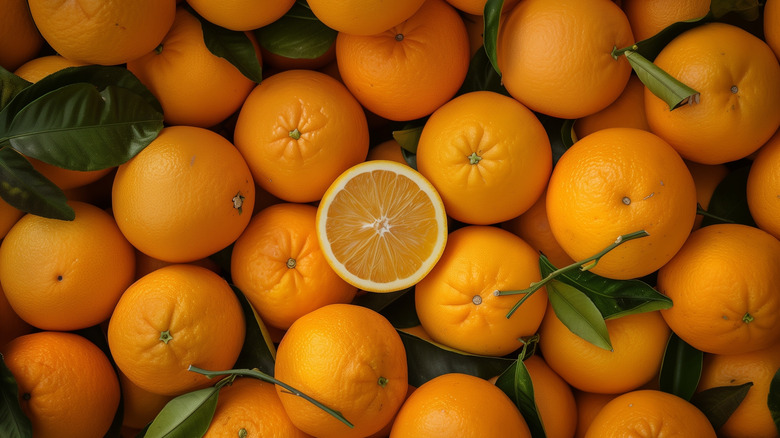This Unexpected Fact About Oranges That'll Have You Questioning Their Name
If you've ever wondered which came first, the color or the fruit, you're not alone. When it comes to the orange, the answer might just surprise you as much as discovering unusual fruits like pineberries (which resemble strawberries but taste like pineapple). Unlike huckleberries, which are beloved for their short, sweet summer season, the orange is a staple that has transcended trends and centuries. And its etymological journey reveals a story just as intriguing as any hard-to-find fruit you spot at the grocery store.
The orange wasn't always known as the orange. Its history begins with its original name, "naranga," derived from the Sanskrit word "nāraṅga," meaning "orange tree." The name traveled along ancient trade routes, morphing into "narang" in Persian and "naranja" in Spanish. Eventually, the French altered it to "orange," dropping the initial "n" sound due to a phonetic shift. This wasn't just a random change — it was influenced by the French word "pomme d'orenge," or "apple of the orange tree," which sounded similar to the evolving pronunciation of the fruit's name. The story of how oranges got their now iconic title is filled with surprising twists, including global trade routes and linguistic transformations.
The etymology of orange
Interestingly, the word "orange" didn't refer to the color until much later. In Old English, the color was described as "yellow-red" or "geoluread." It wasn't until the fruit reached Europe in the 16th century — after going through years of cultivation that brought it to its current appearance — that it also came to signify the vibrant hue we recognize today. This makes the orange a rare case where the fruit influenced linguistic evolution.
The orange's rich etymological story also reflects its global significance, serving as a testament to the power of trade, cultural exchange, and adaptation. As a fruit that thrived on the trade routes connecting the East and West, it became more than just sustenance — it became a symbol of abundance and luxury. In medieval times, oranges were prized delicacies reserved for the wealthy, with their fragrant peels often used in perfumes and their vibrant color seen as a marker of affluence.
Today, while oranges might feel like an everyday staple, their influence endures. Their global popularity parallels the rise of hard-to-find fruits like mangosteen or the tasty dragon fruit, which are also celebrated for their unique flavors and cultural significance. The next time you enjoy an orange, whether freshly peeled, juiced, or baked into a dessert, take a moment to appreciate its extraordinary journey through time. From its origins in ancient Sanskrit to its transformation into a beloved global staple, the fruit is a reminder of how food connects us to the past, while continually shaping our present and future.

